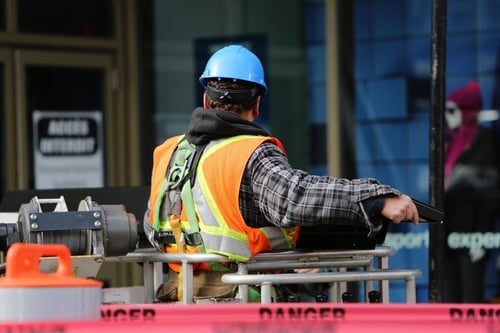What is Personal Protective Equipment in Construction
When you imagine a construction worker’s daily uniform, typical things that may come to mind are the safety glasses, the reflective vest, and the classic hard hat. While they might appear to be just part of a uniform, all of these accessories are essential to conducting workplace safety and are some of the main items worn as a part of a construction worker’s personal protective equipment. Personal protective equipment is crucial to safety on the job site, so below we’ll fill you in on what it is, why it’s worn, and how you can use it to better improve safety for your workers.
Table of Contents
What is Personal Protective Equipment
It’s a no-brainer that personal protective equipment is designed to protect oneself from the dangers they may encounter during work in their field, but what exactly is it defined as? Personal protective equipment (PPE) is a general term for wearable equipment and gear that’s meant to protect the wearer from hazards and dangers on the job site. Although construction is one of the largest industries utilizing personal protective equipment, it is used in many other fields too, like the military, the police, and firefighting.
PPE Forms
In the construction industry, workers use all kinds of equipment and materials. Because of this, there is an abundance of protective gear available to protect against the possible dangers a worker can encounter on site. Below are the main areas of the body requiring protective gear and items used to protect each region:
The head > includes hard hats to protect against falling objects and blows to the head.
The eyes > includes safety glasses, face shields, and chemical splash goggles to protect against particles from getting into the eyes when working in certain areas like welding or handling hazardous materials.
The ears > includes ear plugs and ear muffs to protect against loud noise that can occur on site.
The back > includes support belts to protect against muscle strains that can come from lifting heavy objects.
The hands and feet > includes snug, insulated gloves and puncture-resistant, steel-toed boots to protect against shocks from working with electrical wires or objects from crushing the feet..

Personal protective equipment includes more than just protective clothing. There are three other important categories including fall protection, respiratory protection, and visibility. Falling is one of the leading causes of death on construction sites, so using appropriate protective gear like a safety harness is one way to prevent this danger. Protecting the lungs is also important, so using respirators to prevent the inhalation of hazardous gases, vapors, and particles is another way to practice good safety. The visibility of your workers is also important on construction sites, so enforcing the usage of high visibility vests keeps workers easy to spot, ensuring the ability to quickly find anyone in case of an emergency.
The Risks Involved
Due to the many potential dangers that workers can face in the construction industry, wearing personal protection equipment is necessary. Depending on the job site, workers can face a number of risks including falling, electrical shocks, blunt trauma, and getting caught in between objects, all of which can cause death in serious cases. Construction workers can experience a number of serious nonfatal injuries too, like chemical burns, broken bones, and severed fingers. Due to the severity of these risks, companies can suffer huge fines for the non-usage of safety equipment, and in some cases can face massive legal trouble.
Improving Construction Site Safety
Construction site safety should be a priority for employers, so it’s important to practice good safety procedures through the usage of personal protective equipment. One way to practice this is to make sure your employees understand how to use their equipment, what it protects them from, and even more important: what it does not protect them from. Personal protective equipment has to fit properly to ensure its maximum protective ability, and proper care and maintenance are also equally important in practicing good safety measures. Workers also need to know when to replace equipment, especially when it comes in contact with hazardous materials, or gets damaged as this reduces its maximum protective ability.
Conclusion
Understanding why PPE needs to be worn is important as big fines, legal trouble, serious injuries, and even death can occur from a lack of or improper usage. Ultimately, personal protective equipment improves construction site safety which is why it’s important to promote a safe working environment with fit testing and ensuring all occupational and health safety requirements are met.

